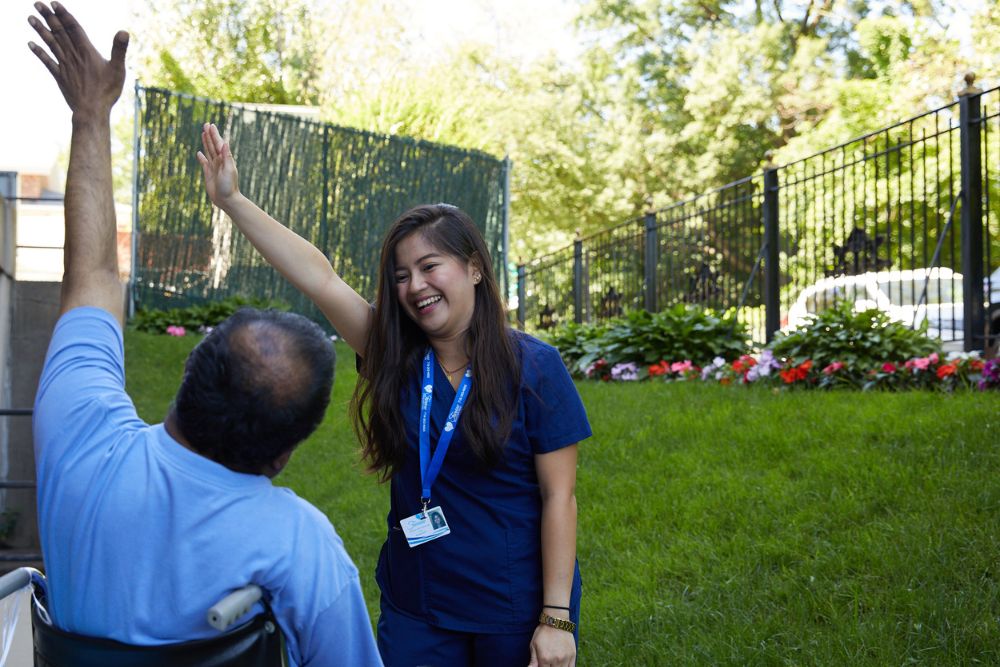Do You Need Rehab After Stent Surgery and When?
Recovering after a cardiac event takes time. Not only will you need to practice patience while you get used to lifestyle changes, but you’ll also need to set time aside for recovery and rehab after stent surgery. Rehab is often recommended after receiving a stent to regain strength and prevent complications and hospital readmissions. Not everyone needs it though.
In fact, the American Heart Association strongly recommends cardiac rehabilitation. What’s more, a new study in the Journal of the American Heart Association found that it can lower the risk of death linked to heart-related complications by nearly 40%, helping people living with heart disease to live longer. Now that you know why it’s important, here are key details about cardiac rehabilitation to help you prepare.
Fairview Rehab and Nursing Home in Queens, NY, offers inpatient and outpatient rehab therapy for those recovering from stents and other heart-related procedures. For more information on aftercare and when it’s needed, check out the following sections.

What does rehab after stent surgery involve?
Cardiac rehab is customized around each patient’s unique needs and recommended after suffering a heart attack or undergoing heart surgery, like a stent placement. This personalized program will help patients to regain their strength and minimize the risk of future heart issues. At the same time, it will also educate them about healthy lifestyle choices, like quitting smoking, and how to manage certain conditions such as high cholesterol, obesity, or high blood pressure.
Your team will also offer the emotional support needed to introduce these changes, helping you to improve your overall quality of life. To help with the emotional support, your rehab team might also include a mental health provider.
It’s common for patients to experience depression or anxiety after cardiac procedure. As the success of your rehab is linked to your dedication, it’s key that you view recovery holistically and get support in all areas.
Rehab after stent surgery may last a week or month. However, some patients may need more time.
During the rehab, you’ll typically exercise few times a week. These exercises may include low-impact activities like walking, jogging, or yoga. It might also include resistance training or exercises to help strengthen your muscles.
During the rehab process, your team will frequently check your health to ensure you’re not at risk for heart complications and to monitor your progress. They’ll also ensure that you’re comfortable with the tempo and that it doesn’t pose any risk.
When do you need to start?
A patient usually starts rehab within a few days to a week after a stent procedure, often as an outpatient. However, it’s important to note that you’ll first need to get the go ahead from your doctors. While it’s recommended, it’s not suitable for every patient. To determine if you’re fit to start, your doctor will perform an examination and review your medical history.
It’s important to remember that recovering after stent surgery will require lifelong lifestyle changes. This means that while there’s a set date for when you can start with your rehab after stent surgery, a big part of the program will become part of your everyday routine. While you might not be required to exercise that frequently anymore, it’s still recommended that you continue to exercise regularly and stick to your new diet.
Resources:
https://newsroom.heart.org/news/home-based-cardiac-rehabilitation-may-help-people-live-longer#:~:text=The%20joint%20statement%20strongly%20recommends,valve%20surgery%20or%20heart%20transplantation.
https://www.health.harvard.edu/heart-health/complications-after-receiving-a-stent#:~:text=One%20is%20a%20gradual%20renarrowing,the%20stent%2C%20called%20stent%20thrombosis.
This article contains informational and educational materials and does not replace health or medical advice. For questions or concerns regarding your medical condition or health objectives, speak to a qualified physician or healthcare provider.






Leave A Comment